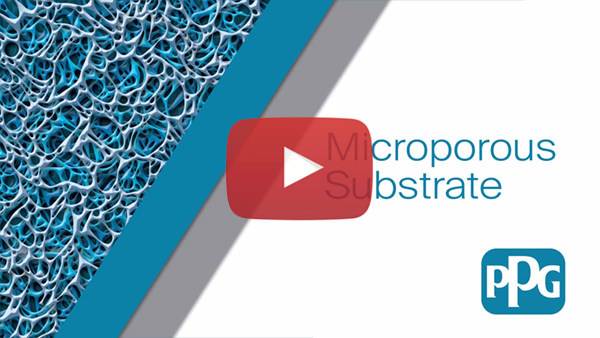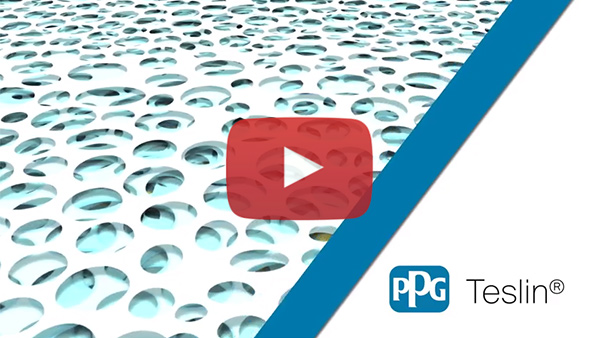Synthetic Paper Defined
If you’re involved with any aspect of creating, designing or printing materials, you’ve likely heard about, or even used synthetic paper. But what exactly is it? And why – or how – should you select synthetic paper over traditional pulp-based paper or other substrate options?
Synthetic paper has become the general term for an entire category of products that look, feel and often perform like standard paper. Rather than wood pulp as the primary ingredient however, they are made with synthetic polymers to deliver additional material properties. Synthetic paper stock is favored for a host of applications that typically require greater durability, strength, versatility and functionality than conventional paper.
Although numerous manufacturers produce countless varieties, almost all synthetic papers are produced using petroleum-based resins. Often called “tree-free paper,” they are essentially a printable polymer-based substrate. Just like the plastics identified by different numbers in your recycle bin, each type of synthetic paper can be categorized by its chemical composition. For instance, PPG TESLIN® synthetic paper is a single-layer, polyolefin-based material, which is a unique substrate category among synthetic papers. Other synthetic papers may be composed of thermoplastic materials including high-density polyethylene (HDPE), polypropylene (PP), vinyl, or other options, and are often coated.
How is Synthetic Paper Used?
 Chances are, you’ve already encountered more than a few varieties of synthetic
paper during your day: from food or household product labeling to medication labels, or industrial
product identification tags, to loyalty club cards, restaurant menus, durable signage, waterproof
maps, or even secure credentials such as ID cards and passports. The use of synthetic paper
continues to increase for a myriad of applications because of its durability, versatility, print
quality and compatibility, and in many cases, greater cost-efficiency than ever before.
Chances are, you’ve already encountered more than a few varieties of synthetic
paper during your day: from food or household product labeling to medication labels, or industrial
product identification tags, to loyalty club cards, restaurant menus, durable signage, waterproof
maps, or even secure credentials such as ID cards and passports. The use of synthetic paper
continues to increase for a myriad of applications because of its durability, versatility, print
quality and compatibility, and in many cases, greater cost-efficiency than ever before.
Origins of Synthetic Paper
Synthetic paper began to emerge as an alternative to traditional paper in the mid-20th century. Deforestation and water conservation became greater concerns for producers of wood cellulose fiber paper. At the same time, the petrochemical industry was thriving. In the U.S., Mead Paper Company and petroleum company Union Carbide joined forces to create one of the first plastic papers. Numerous businesses in Japan endeavored to create a synthetic paper offering, and product development also took place in the U.K.
The results of this work included early versions of some of the top current brands of synthetic papers. PPG developed Teslin substrate in the mid-1980s as a microporous, paper-like product that could successfully absorb ink, toner and laminate film for high-quality commercial printing and labeling. Since then, its single layer microporosity, soft supple texture, vibrant high-quality print reproduction and other material properties have been proven effective for many other end-uses.
A Variety of Options
Throughout the past several decades, more and more companies have marketed new brands of synthetic paper, further broadening the definition and array of options. But this diversity means not all synthetic papers are created equal. In fact, some synthetic paper options are created expressly for one specific application.
Today, manufacturers produce multiple grades and gauge thicknesses of synthetic paper products under different names and brands. The distinctions are usually based on print technology and intended application uses. You can find synthetic paper that is designed for applications including security, food contact, biodegradability and extended thermal exposure. All the choices further complicate how you can best determine the sometimes subtle, but important differences between the options.
Do you have an application that demands synthetic paper? If so, check out our 10 Tips for Selecting the Best Synthetic Paper or learn more about the performance features of Teslin substrate.
- Industrial labels
- Durable product labels
- Restaurant menus
- Laminated cards
- Waterproof maps
- Heavy-duty manuals
- Racing bibs
- Wristbands
- Ultra-durable POP advertising

Learn about Teslin substrate and its performance benefits.
 See the many applications that Teslin substrate is used for.
See the many applications that Teslin substrate is used for.
